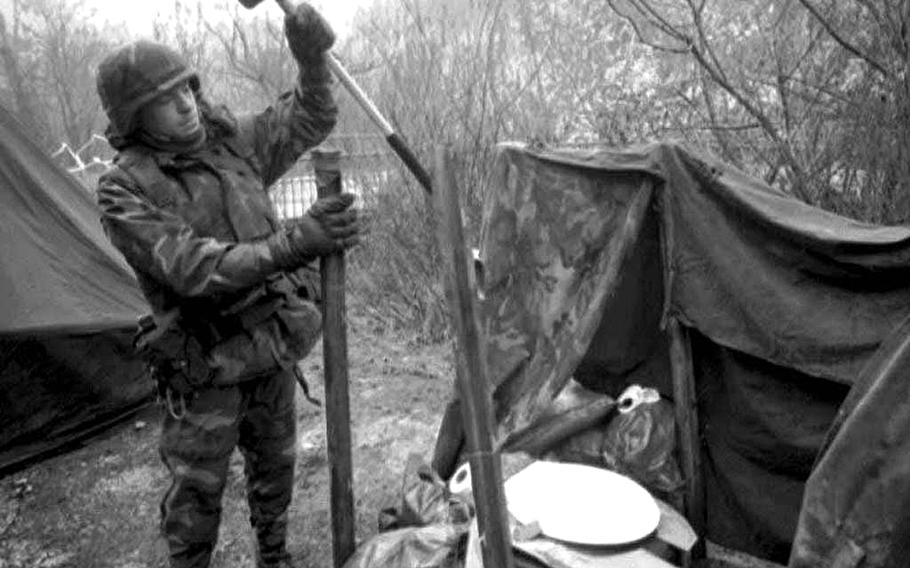
Sgt. Dennis Schaffer of Company A, 2nd Battalion., 68th Armored Regiment, based in Baumholder, Germany, drives an iron pole into the frozen turf while setting up a makeshift toilet at a checkpoint near Olovo, Bosnia-Herzegovina, 45-miles south of Tuzla in January 1996. (Stars and Stripes)
It’s been 20 years since U.S. troops entered Bosnia-Herzegovina as part of a peacekeeping mission, marching over a massive pontoon bridge across the flooded Sava River on the border with Croatia.
Combat engineers constructed the bridge in just three days.
Some 20,000 U.S. troops eventually took part in NATO’s first deployment outside alliance territory, accounting for a third of alliance forces sent to help keep a fragile peace among Bosnia’s Muslim, Croat and Serb communities. Many of the peacekeepers were posted to isolated outposts along the confrontation lines between the Muslim-Croat federation and the Bosnian Serb entity during the freezing winter months of 1996.
The Dayton Accords, which ended the 3 1/2-year civil war, called for the deployment of thousands of peacekeepers to man cease-fire lines between the warring sides. They also oversaw the removal of heavy weapons from the front lines and the demarcation of the boundary between Bosnia’s two constituent entities — the Muslim-Croat Federation and the Serb Republic.
Gradually the Implementation Force, known initially as IFOR and later as SFOR (for Stabilization Force), would build up to nearly 60,000 troops from 32 countries.
IFOR replaced the widely ridiculed U.N. military mission, which had unsuccessfully sought to dampen the fighting in which nearly 100,000 people perished.
U.S. troops accounted for about a third of the IFOR force, both in Bosnia and in bases in surrounding countries, which were used as logistics hubs. Most of the initial units were drawn from garrisons in Germany where they had been stationed during the Cold War. IFOR’s first commander was U.S. Adm. Leighton W. Smith.
Eventually, more than 60,000 U.S. troops, including National Guard units, participated in the NATO force in Bosnia.
In 2004, NATO handed over responsibility for security in Bosnia to a much smaller European Union force, which remains in place to this day.
Not a single American soldier was killed in combat in Bosnia, although several did die from other causes.
In 1999, thousands of U.S. and NATO troops were stationed in nearby Kosovo to carry out a similar deployment that continues today.
Stars and Stripes reporter Kent Harris contributed to this report.